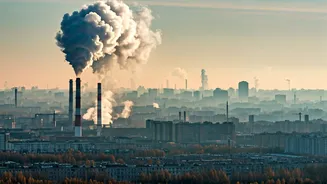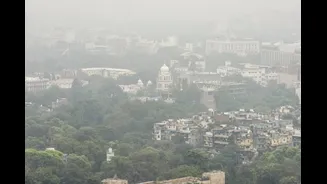Delhi's Pollution Position
The findings indicated that Delhi unfortunately held the sixth position among India's most polluted cities, a clear indicator of the city's significant
struggles with air quality. This data, which came from a recent report, provided a stark assessment of the environmental conditions. It served as a critical evaluation of pollution levels and provided a basis for further analysis and awareness. The assessment reflected the extensive impact of pollutants on the capital city, underscoring the urgent requirement for focused interventions. This ranking of sixth among the polluted cities acted as a reminder that the city's environment needed immediate and comprehensive attention to rectify the situation. This situation requires both immediate and long-term strategies. The overall implication was a critical necessity for a more thorough and proactive environmental management plan.
Dharuhera's Top Spot
The air quality report further brought to light that Dharuhera, situated in Haryana, recorded the highest levels of pollution. This highlighted the varying impact across regions and provided important insights into the geographic patterns of air pollution in India. This placed Dharuhera at the forefront, where pollution was the most extreme during the month of October. This specific observation suggested the need for region-specific strategies aimed at controlling pollution levels. The data serves as a compelling call to action. The severity of the air quality issue necessitated immediate remedial steps. The significance of Dharuhera's placement highlighted the need for environmental policies tailored to manage pollution effectively. This pointed to areas that needed immediate attention.
Broader Indian Context
The assessment of pollution levels across the nation paints a comprehensive picture of the environmental condition. The rankings provide a comparative insight into the diverse pollution challenges faced by different cities and states. These insights revealed the extent of pollution problems across the country, showing the scale and the diverse distribution of pollution. The information revealed by these reports is crucial for environmental strategizing. The goal should be to understand which areas are most affected. This broad perspective is crucial for understanding the regional variations and for devising strategies to improve overall air quality. These comparative assessments are beneficial for evaluating the effects of pollution across different locations and for setting priorities for environmental management strategies.
October's Significance
The month of October provides important details about the cyclical nature of pollution and related difficulties. The data collected from October can be used to emphasize seasonal changes in pollution levels, which are critical for predicting and managing air quality throughout the year. The report highlighted seasonal trends and identified the need for specific preparations during peak pollution seasons. It's crucial for understanding the environmental challenges and for strategizing to effectively counter them. The focus on October provided a specific timeline for pollution, which allowed for a more detailed analysis of the variables. This also aided in the creation of targeted intervention strategies. This information aids in the implementation of focused strategies to reduce environmental impact. The analysis highlighted the seasonality of pollution and the necessity for specific solutions.
Call to Action
This study underscores an urgent need for the development and execution of pollution control measures. The rankings of cities and the identification of the most affected regions serve as an important call for action. It motivates concerned parties to work on practical steps. It encourages the execution of impactful and lasting changes. The study acts as a catalyst, urging environmental agencies, local governments, and citizens to collaborate on reducing pollution. It stresses how important it is to implement measures to improve air quality. It also promotes the need for proactive involvement and encourages joint action. This effort aims to safeguard public health and to build a sustainable environment for all.
















